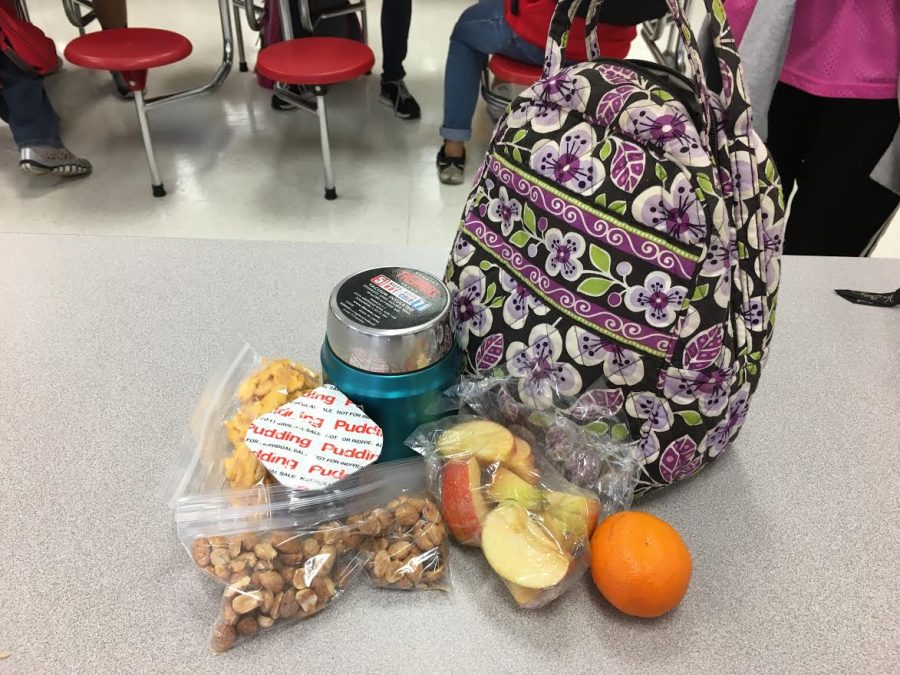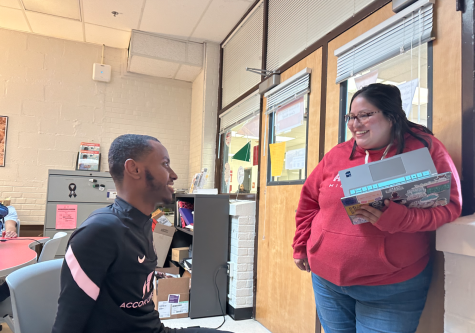Reasons why packing lunch may be healthier for you
How to manage the contents and portions inside your lunch box
A packed lunch should not just be a small sandwich and should instead include carbs, fruits and protein.
Now that school lunch has increased to $3.25 a tray, a cheaper alternative may be to bring a packed lunch yourself. Waiting in those long lines for a limited assortment of food is not worth your time.
Invest your mornings to packing a solid lunch that will benefit you in the long run.Having the freedom to make your own lunch, is a nice option because what you eat for lunch won’t be a surprise and you’ll be more likely to enjoy what you made yourself.
Planning out your lunches to have balanced portions and a variety of nutrients is important to staying healthy. The important points to focus on should be grain, protein, fruits, vegetables and drinks.
“You don’t have to wait in long lunch lines and you get to pack what you want to,” senior Kimberly Romero said. “You get to pack healthier options and bigger portions.”
However the freedom you have when packing lunch, does not justify you tossing random things into a paper bag and calling it a day.
Grains
Carbohydrates should be the largest portion of your meals. Your carb intake should be approximately 50 percent of your calorie breakdown and grains are a good source to get them from.
Making a sandwich with whole grain bread is a better choice as whole grain has lots of nutrients. Whole grain is healthier than white bread and contains tons of vitamins, minerals and fiber that will last you throughout the school day.
In addition to whole grain, the contents of your sandwich should also be healthy. Having whole wheat bread but filling it with nutella is not an ideal lunch.
Make a sandwich that is both nutritious and quick to make such as a simple ham and cheese or a peanut butter sandwich.
Another source of whole grain can also come from granola bars. These easy to pack snacks are convenient and are oftentimes high in fiber as well.
Filled with the necessary nutrients, whole grain will keep your stomach filled and acts as your source of carbohydrates.
Protein
Although protein is typically associated with meat, peanut butter also has a good amount of protein. A peanut butter and jelly sandwich is easy to make and will cover your daily dose of protein in one sitting.
If peanut butter isn’t a good option for you, there are other alternatives to protein. Ham, bologna and turkey are all good options for packing lunch and have plenty of nutrients for your body.
Another source of protein can also come from hard-boiled eggs. These are easy to make and are simple enough for you to pack every day to lunch.
Fruits and Veggies
It may be tempting to pack sugary sweets but a better source of natural sugar can come from your portion of fruits. A small bag of strawberries or simply an apple will suffice. These fruits will serve as your sugar intake without having to eat any of those artificially flavored candies and many fruits also have carbohydrates.
If fruits are not appealing to you, vegetables may be the better option. Vegetables are rich in potassium and contain tons of fiber.
One serving of baby carrots of about eight pieces is only approximately 30 calories and has 2.5 grams of fiber.
Drinks
A sweet beverage like a Capri Sun or Gatorade may be appealing but you’re better off just packing a water bottle. Water is zero calories and is more effective at keeping you hydrated. Those sugary juice boxes are likely to make you parched throughout the day and being thirsty all day is uncomfortable.
Overall if you have the option to pack lunch instead of buying, you should take it. Packing your own lunch will enable you to control your portions and diet choices.

Active member in various honor societies and clubs, senior Julie Nguyen has been on The A-Blast staff for three years. She is currently the Health Editor...






